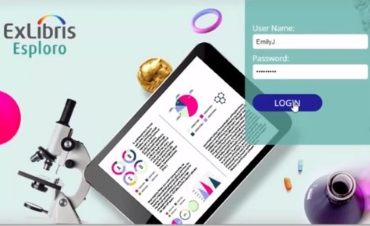Eddie Neuwirth and Adi Alter, Ex Libris
Institutional repositories that collect a university’s research assets in one place and make them publicly available serve an important role. But in many ways, the repositories that exist today aren’t meeting the needs of libraries or of the research community effectively. A new approach to research information management is needed.
1. Lack of structure and efficient workflows
These repositories often lack a clear and cohesive structure, which makes research assets hard to find. They’re also cumbersome to maintain, with inefficient workflows that make it hard to deposit new research output, link publications with their underlying data sets, and add comprehensive metadata to make these assets discoverable.
As a result, the research assets of universities aren’t being showcased as well as they could be, and staff are spending too much time on labor-intensive tasks.

In some cases, universities have lost sight of what the goals for their institutional repository were in the first place, or else these goals have evolved over time.![]()
2. Ease-of-use issues
Populating an institutional repository can be challenging. Typically, faculty are encouraged to deposit their research output by filling out an online form. But many researchers don’t follow through on this step, either because they don’t have the time or they don’t see the value in doing so.
Even if faculty faithfully deposit their research output, they often do so with incomplete metadata. Library staff frequently have to enrich the metadata associated with these entries to ensure that research assets are easily discoverable. With no easy, systematic way of doing this, the process can take a significant amount of staff time.
3. Changes in storage and management strategy
What’s more, many universities have no clear institutional strategy for how they will store and manage their research assets. As one research article notes, this often results in the creation of multiple repositories within the same institution.
In some cases, universities have lost sight of what the goals for their institutional repository were in the first place, or else these goals have evolved over time. In other cases, the personnel who created the institutional repository might not be the same people who manage it today, and so the policies defining what belongs in the repository may not be clear.
4. Disparate systems & multiple repositories
At some institutions, the repository began as a way to showcase only open-access materials. As these institutions looked to expand the kinds of research assets being collected and managed, they developed additional repositories for other kinds of materials. Some universities have been forced to create multiple repositories because the systems they were using wouldn’t support new asset types. Therefore, a university might have one repository for publications, another for data sets, and so on.
Having disparate systems makes it harder to link together data and publications, standardize the collection of research assets, and apply metadata to these assets consistently. Managing multiple repositories also takes more time and effort.
And even when institutions don’t have multiple repositories, the lack of a clear research asset management strategy can be problematic, resulting in a repository that is a mix of unrelated content — thus undermining its value.
Why does this matter?
These shortcomings in research asset management have important implications for all stakeholders.
- For researchers, not promoting their work as effectively as possible in a research repository means that they could be missing opportunities for professional recognition, for connecting with colleagues who are doing similar research, and even for securing grant funding.
- For research librarians, having to spend countless hours manually updating the institutional repository and adding or enriching metadata takes away from the time they could be spending on more strategic work.
- For universities, when assets are missing from a repository, universities have an incomplete picture of what their research output is. The institution might not be showcasing its work effectively for potential students, donors, or faculty and could even be violating open research requirements.
- For the research community and the public as a whole, when a university’s research output is not easily discoverable, the entire sum of knowledge is less rich as a result.
We believe a next-generation research repository can help solve these challenges by making it much easier to collect, manage, promote, and track the impact of a university’s research outputs.
To learn how, download our free white paper on “The Need for a Next-Generation Research Repository”.
Learn more about Ex Libris research information management solutions.
December 6, 2018






